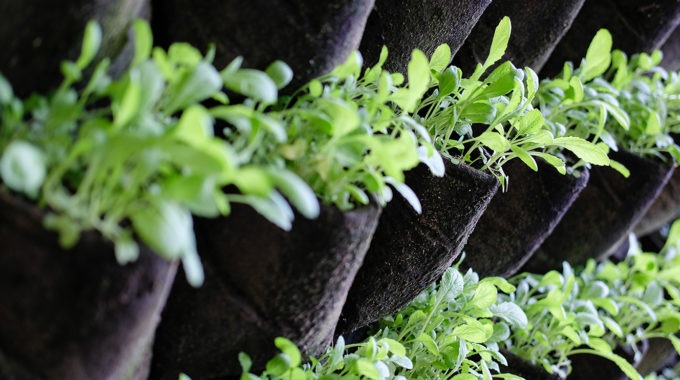Vertical gardening: the only way is up
Home gardening has taken off in a big way since COVID hit. Which is great for those of us who have enough space in the backyard or access to a community garden. But what about people who live in an apartment, or only have a small courtyard? Grow pods and raised garden beds are great, but they can still take up a lot of room. The solution here is as simple as those walls you’ve been staring at during lockdown. You can still grow plenty of fresh vegies and herbs using a vertical gardening system. We take a look at some of the best vertical gardening systems on the market, and offer tips on getting started.
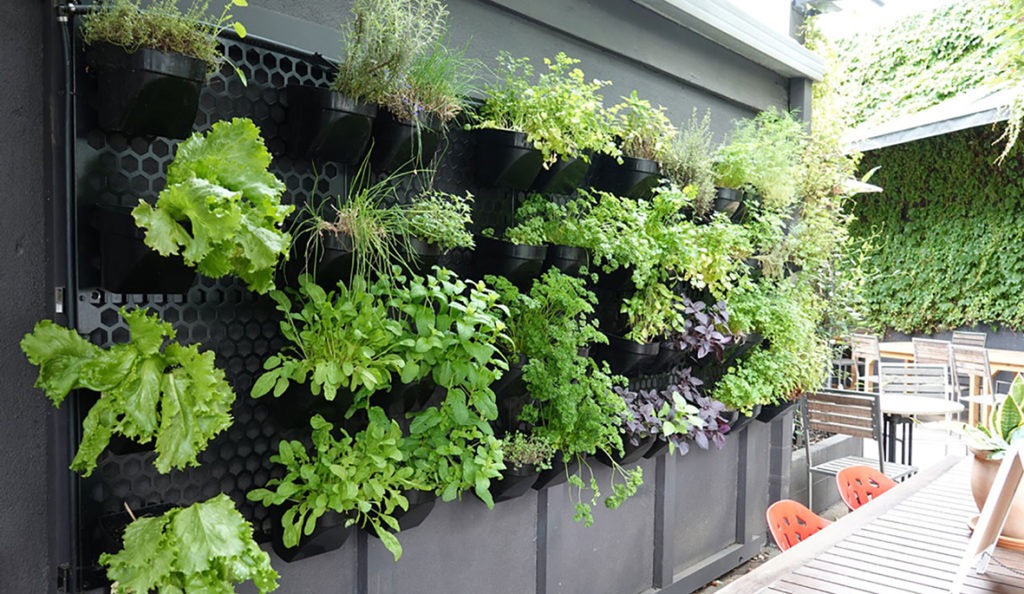
Simple and sustainable
Vertical gardens aren’t just great for small spaces. They’re also easy on the joints and aesthetically pleasing. Even better, they need less water than your average vegie patch.
“Our system uses 95 percent less water than the average garden,” says John Papalia of VIRID Vertical Gardens, which makes food walls, vertical garden kits, garden panels and free-standing units. “And the plant pot itself will retain a fair amount of water.”
The VIRID system is very simple – you just hook the pots onto the frame and, voila! You’ve got your own mini urban farm. The system has also been hugely popular in office buildings and public spaces, where a wall of greenery can add a beautiful natural touch. VIRID, based in South Melbourne, also has its own greenhouse. This produces indoor and outdoor plants, herbs and vegetables, ferns and succulents, all using organic methods.
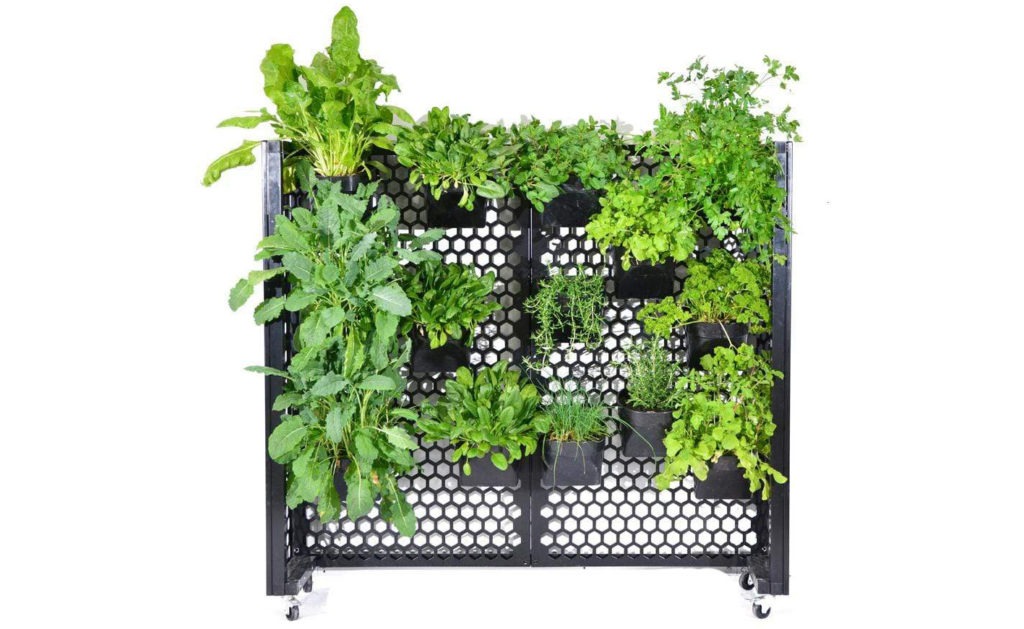
Growing tips
While growing your plants vertically is pretty straightforward, there are a few tips you should know before you decide where your plants should go.
“People tend to think that the top pot is always going be the one that’s the wettest, but it’s not,” Papalia says. “It’s the driest. The bottom ones are always more moist. So you should always use a plant at the top that can handle less water than the plants at the bottom. For instance, rosemary and oregano like it dry. So you’d put your oregano and rosemary at the top. Then place your lettuces and things like that a little bit lower down.”
Great plants for food walls include tomatoes, cucumbers, spring onions, beans and peas, as well as strawberries, salad greens and herbs of all descriptions. You’re better off starting with seedlings rather than seeds. And remember that some plants will need support as they grow. Trellises and stakes can provide support and can also anchor plants in place if it’s windy. With soil, choose something that’s light enough for your food wall to carry but still nutritious enough for your plants. Also, consider the sunlight. You may need to move your plants around if they’re getting too much light, or not enough.
The most important thing about a vertical garden is irrigation. With the VIRID system, you just set up a timer to a tap and run a line across the top. This runs drippers across the top, and the water makes its way down through each pot.
To check out the full VIRID range, head to viridverticalgardens.com.au
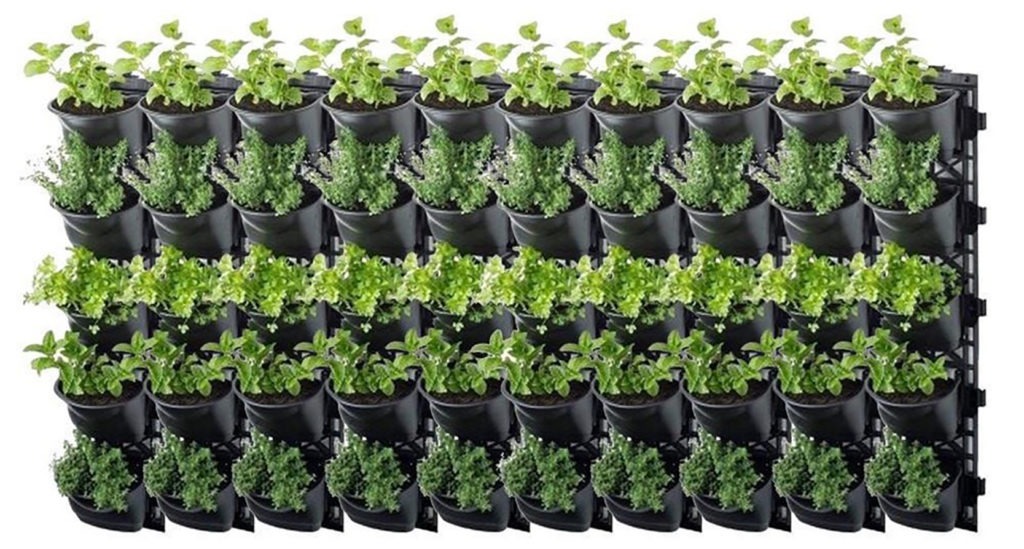
Eco R Us
Eco R Us makes eco-friendly house and garden products of all descriptions, including vertical gardening systems and planters. Pots easily click onto the sturdy frame, which can be oriented horizontally or vertically and is made from 100 percent recycled material. Each pot contains a reservoir overflow system to enable efficient watering of all your plants. Just water the top planter, and excess water will make its way directly to the reservoirs of lower planters without the need to drip through soil. The business also donates to OzHarvest, where every dollar donated equals two meals for hungry Aussies.
To check out the full Eco R Us range, head to ecorus.com.au
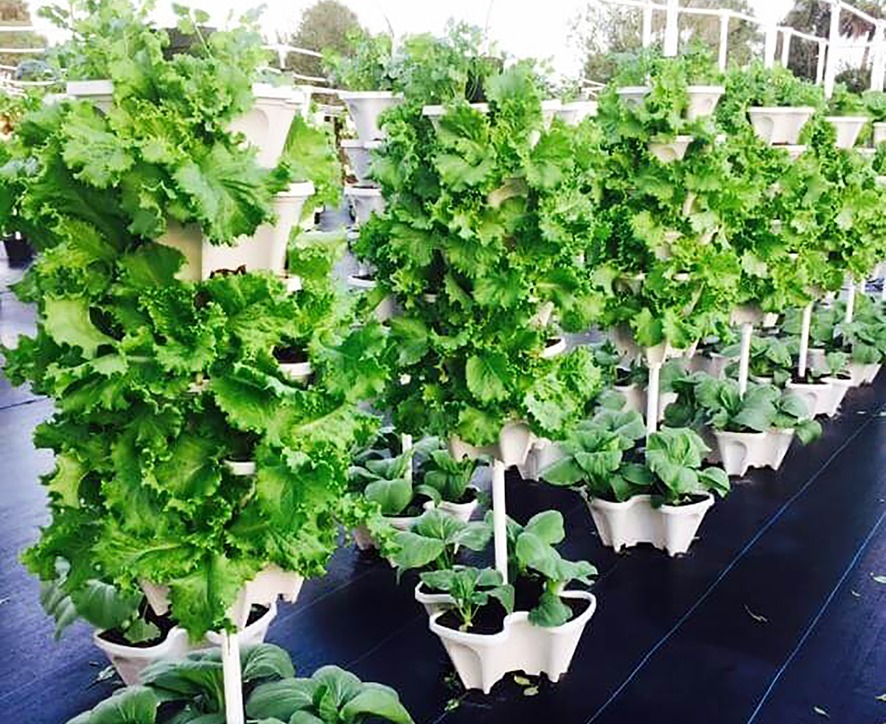
Mr Stacky
Used by commercial growers worldwide, Mr Stacky’s vertical gardening system is also ideal for home vertical gardens. It’s up to 85 percent more water efficient than your average garden bed, and watering is simple. Just water the top planter and Mr Stacky will do the rest. You can also choose from a standard soil base or a hydroponic system. Because the design is modular, you can configure your plants in a variety of ways and change them around as needed. This also means you can take your garden with you if you have to move.
To check out the full Mr Stacky range, head to mrstacky.com.au

Vertical Gardens Direct
An Australian owned and operated business founded in 2015 by landscape architect Daniel Haeyen, Vertical Gardens Direct offers a range of vertical garden kits and planters. The exclusively online retailer’s Wallgarden Multi Hang Kit can be quickly and easily set up. You either screw it straight onto a wall or fence, or hang it from an existing mesh or trellis.
The Vicinity Greenwall vertical gardening system comes with a self-watering tank and pump system. It creates a 1.2m x 1.2m self-contained green wall. The Vicinity tank and pump system re-circulates the water from the tanks at the bottom of the vertical garden through the included irrigation pipes, up to the top of the vertical garden. From there it cascades down, watering each plant until it reaches the tanks at the bottom again. You can also add a timer to a power outlet to only water your green wall at certain times of the day.
To check out the full Vertical Gardens Direct range, head to verticalgardensdirect.com.au
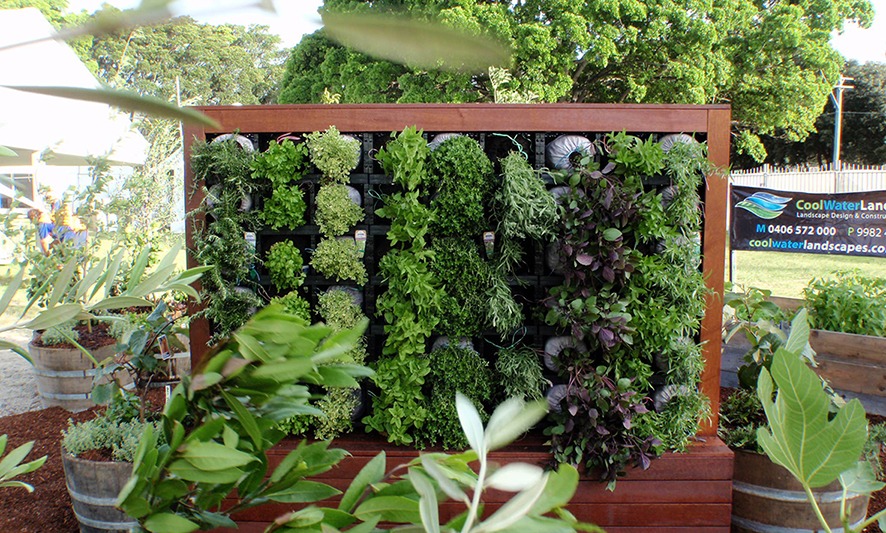
Eco Sustainable House
Based on the Gold Coast, Eco Sustainable House has a range of vertical garden, grow wall and green wall products suitable for both indoor and outdoor installations. The modules can be quickly put together, and provide optimum moisture retention for plants. Eco Sustainable House’s DIY Vertical Garden Kit is the perfect starter if you’re looking to create a food wall on your property. This kit gives you a lightweight frame and a handful of pots. All you need to add is soil and plants. And because no screws or fixings are required, you can easily rearrange your plants to suit the changing climate or sunlight levels.
To check out the full Eco Sustainable House range, head to ecosustainablehouse.com.au

Bunnings
Bunnings offers a range of vertical gardening products, including the Holman GreenWall Mobile Garden Kit and the Holman Pixel Pot GreenWall Vertical Garden. The Holman GreenWall incorporates a fully integrated irrigation system, and you can connect several GreenWalls together as your garden grows. The Holman Pixel Pot system is easy to set up and incorporates an irrigation system. It has four wall mount strips and four pots on each strip, giving you 16 individual pots for planting herbs or vegies. It also has a slide-out tray that collects all water that drains from pots, so there’s no mess with dripping water.
To check out the full Bunnings vertical gardening range, head to bunnings.com.au

At the commercial level: Modular Farms Australia
The Modular Farm System is a complete indoor vertical farming system capable of producing fresh, healthy plants virtually anywhere in the world, in any climate. Custom designed and based on the idea of urban farming, it scales as needed, with additional modules available for multiple purposes. Designed specifically for the diverse Oceanic climate and built in Brisbane, the Modular Farm System has been designed to support farmers from remote isolated communities to crowded urban centres. Capable of either operating as a supplement to a traditional farm or as an independent and self-sufficient business of its own, the system contains a fleet of eight modules that can extend the functionality of a farm to meet any agricultural need.
To find out more, head to modularfarms.com.au


